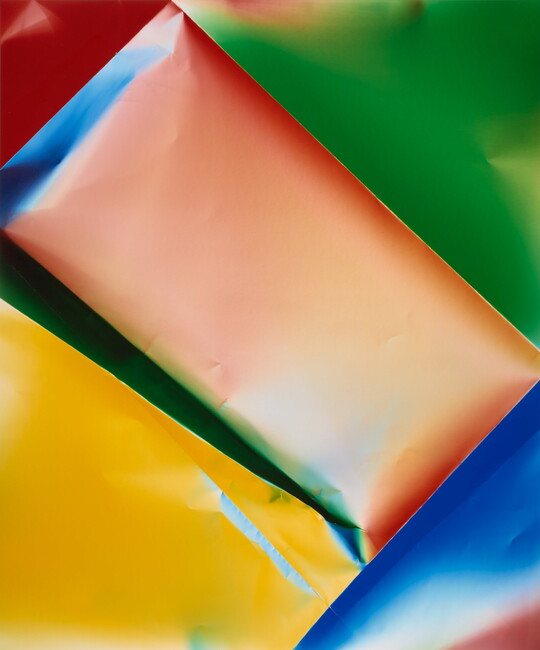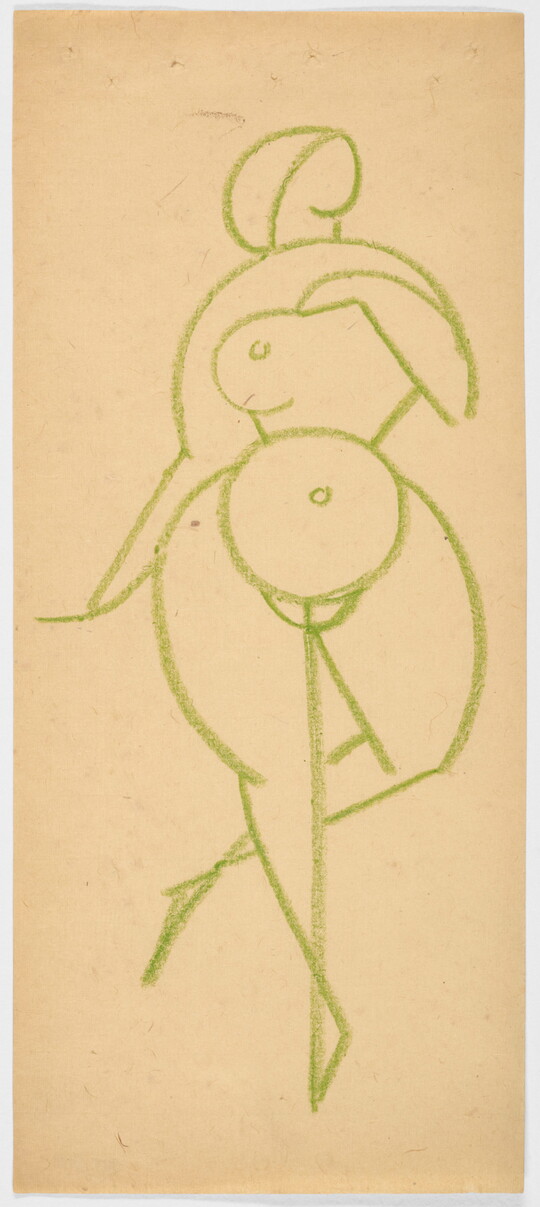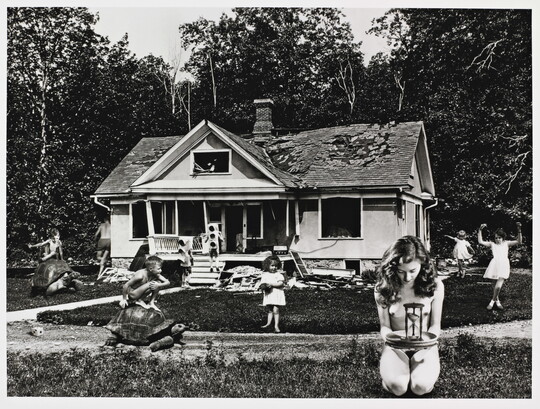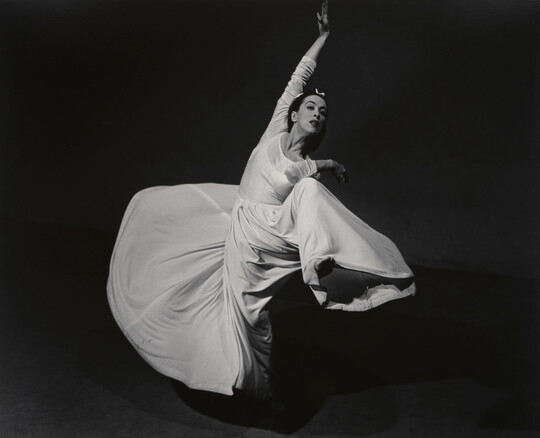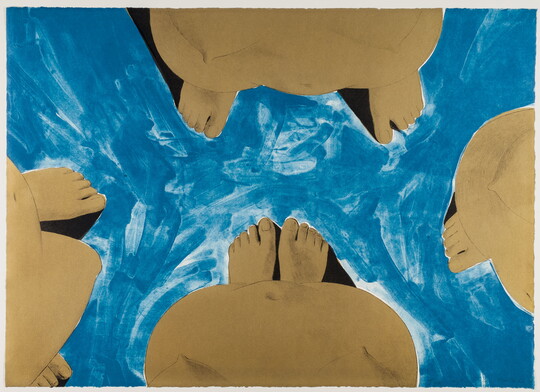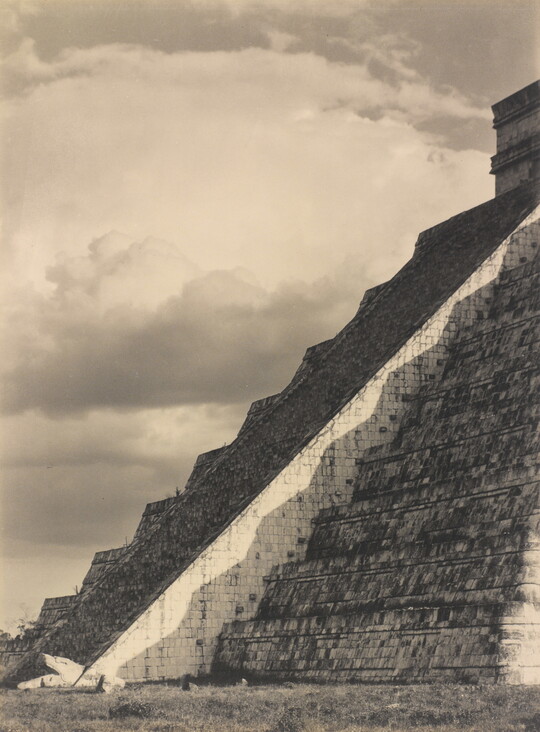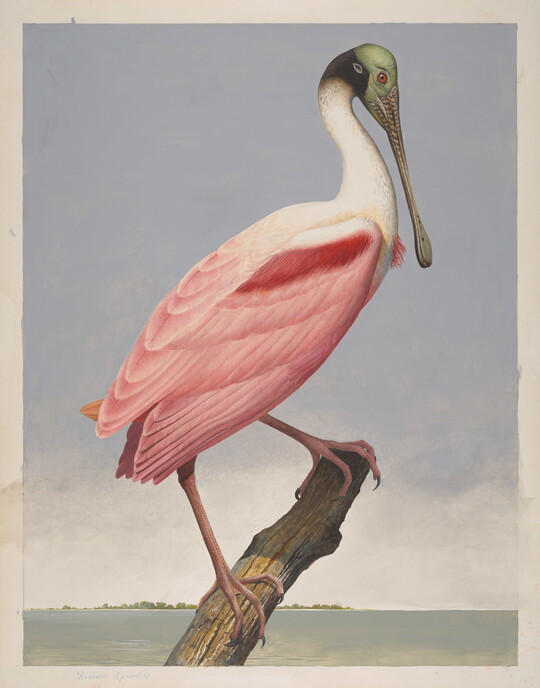


Artwork Images
Photo:
Controls
Claud Jeffers working with a bronc in a corral on the Matador Land and Cattle Company
Object Details
-
Date
1905, printed ca. 1936
-
Object Type
Photographs
-
Medium
Gelatin silver print
-
Dimensions
Sheet: 10 1/2 x 13 11/16 in.
Mount: 10 13/16 x 13 3/4 in. -
Inscriptions
Mount recto:
l.r. in graphite: --<>-- \ S59-57
-
Collection Name
Erwin E. Smith Pettis Collection
-
Credit Line
Amon Carter Museum of American Art, Fort Worth, Texas, Bequest of Mary Alice Pettis
-
Accession Number
P1986.42.120
-
Copyright
Public domain
Additional details
Location: Off view
See more by Erwin E. Smith
Tags
-
How and why did the cowboy become an iconic symbol for the American West?
How have representations of cowboys changed over time? How have they remained the same?
Who or what is missing from popular representations of the American West?
-
Before asking the following questions, find the photograph on Google Arts & Culture. This will allow for zooming in on the details.
Who do you see in the photograph? How can you tell they are cowboys? Describe what each cowboy is doing.
Describe the horse. What is the horse doing? How do you think the horse is feeling? How can you tell? What are the cowboys attempting to do with the horse? How does it appear the cowboys are feeling about their task?
Describe the location. What do you notice about the ground? What do you notice about the fence? Why is there a fence? Look through and above the fence. What do you notice about the background? Where are they?
How did the artist use the lines of the fence, the rope, and the horse’s position to his advantage? Why do you think the photographer is placing viewers inside the fence and close to the action?
Using his camera, Erwin E. Smith documented cowboy life during the early 20th century. What are some benefits of using the medium of photography to document such a subject?
What comes to mind when you hear the words “cowboy” and the “West”? How does this photograph compare to your ideas of those things? How does it compare to other artworks you might have seen depicting cowboys and the American West? Who or what is missing from artworks and stories about the American West?
-
Grades 1–3
Students will write acrostic poems that relate to what they see in Erwin E. Smith’s photograph. Have them write down the word “HORSE” vertically. Then each letter of the word “HORSE” will be the beginning of a word, phrase, or sentence they will write horizontally. Next challenge the students to create an acrostic poem for the word “COWBOYS.”
Grades 4–8
Have students research the history of the cowboy, cowboys of color, cowgirls, or vaqueros and how they have been portrayed in art and literature during the 19th and 20th centuries.
Grades 9–12
Through the artistic medium of their choice, students may express what they believe should be one of today’s iconic symbols of the American West.
All Levels
Activity 1
Using Google Arts & Culture, the students can zoom in on the photograph and select three or more details to sketch.Activity 2
Have students compare this photograph to His First Lesson by Frederic Remington or Wild Horse Hunters by Charles M. Russell. Have them consider time period, medium, location, narrative, and composition.
Share Educator Resources
Amon Carter Disclaimer
This information is published from the Carter's collection database. Updates and additions based on research and imaging activities are ongoing. The images, titles, and inscriptions are products of their time and are presented here as documentation, not as a reflection of the Carter’s values. If you have corrections or additional information about this object please email us to help us improve our records.
Every effort has been made to accurately determine the rights status of works and their images. Please email us if you have further information on the rights status of a work contrary or in addition to the information in our records.
Related Works
-
Zerogram, 2017
Ellen Carey
Dye coupler print
P2018.40
-
Green Nude, ca. 1920
Gaston Lachaise
Crayon on paper
2018.4
-
The Time Game, 2011
Jane Hammond
Gelatin silver print
P2011.29
-
Steamfitter, 1921
Lewis Wickes Hine
Gelatin silver print
P1981.80.3
-
Martha Graham - Letter to the World (Swirl), 1940
Barbara Morgan
Gelatin silver print
P1974.21.17
-
Untitled, 1970
Luchita Hurtado
Lithograph
1970.86
-
Untitled (Pittsburgh Housing), 1930s
Manuel de Aumente
Gelatin silver print
P2009.11
-
Steps of the Castillo, Chichen Itza, 1932
Laura Gilpin
Gelatin silver print
P1964.130
-
Roseate Spoonbill, ca. 1980-85
Scott Gentling, Stuart Gentling
Graphite, opaque and transparent watercolor on paper
2018.26


